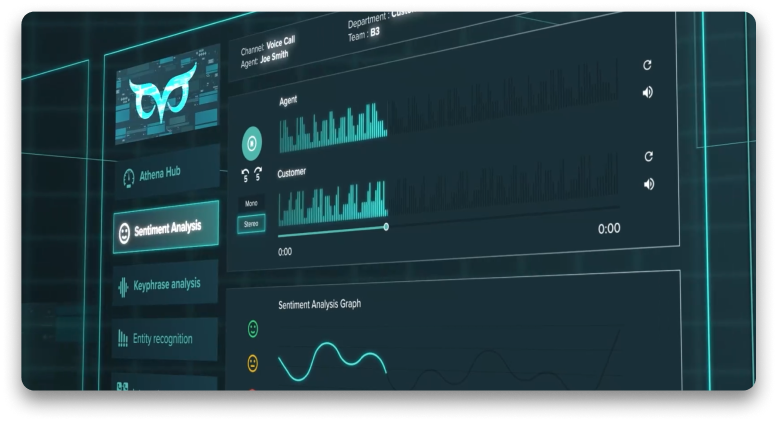Mobile Workforce Management Software
The name “mobile workforce” applies to employees delivering services in the field, frequently on location with customers. Mobile workforce management has expanded both in scale and intricacy over time, with mobile workers necessitating distinct tools and procedures to effectively provide products and services to customers. Mobile Workforce Management software optimizes field operations for industries with employees working outside traditional office setups. It’s vital for field service teams, remote workers, and on-site client work, offering features like task scheduling, real-time communication, time tracking, GPS integration, and task management for increased efficiency.
Today, more and more businesses today are resorting to mobile workforce management software to optimise the efficiency of their mobile workforce.
Mobile Workforce Management (MWM) is a term comprising all the tools and procedures employed to facilitate and empower mobile workers in the execution of their duties. Although every workforce is unique, the ultimate objective of mobile workforce management remains consistent: enhancing the productivity, efficiency, and satisfaction of mobile workers.
In this article, we’ll explain everything there is to know about mobile workforce management software, from what it is to why it is so important.
But what exactly is Mobile Workforce Management? Let’s start off by clarifying that.
What is Mobile Workforce Management?
Mobile Workforce Management software solutions are specialised tools designed to facilitate effective Workforce Management, also known as WFM, in industries with employees who operate outside traditional office environments.
This software is particularly beneficial for organisations with field service teams, remote workers, or employees engaged in on-site work with clients, and its relevance is particularly pronounced in industries such as field services, construction, healthcare, and utilities, where employees are frequently on the move or working in varied locations.
One key aspect of mobile WFM software involves scheduling and dispatching tasks, allowing businesses to efficiently assign responsibilities based on factors like location, skills, and availability. Real-time communication tools are integrated, enabling seamless interaction between the mobile workforce and the central office, ensuring quick updates and collaborative efforts.
Time and attendance tracking features are also essential, helping monitor and record working hours accurately, ensuring compliance with labour regulations and proper compensation.
The incorporation of GPS and location tracking enhances real-time visibility, aiding in route optimization and ensuring that mobile workers are positioned where they are needed.
Also, task management functionalities help organise and prioritise assignments, projects, and tasks for the mobile workforce, contributing to increased productivity and efficiency.
In summary, Mobile Workforce Management Software solution with the potential to boost a mobile workforce’s productivity to previously unimaginable levels. Let’s consider all the possible benefits that mobile workforce management software can bring to the table.
Benefits of Mobile Workforce Management Software
Increased Productivity
Empowering your mobile workforce with essential resources as needed enables them to concentrate on their primary responsibility—serving customers. Mobile workforce management simplifies scheduling, dispatching, and communication through centralised tools, resulting in minimised downtime, fewer inefficiencies, and overall enhanced performance.
Furthermore, Mobile Workforce Management software solutions boost operational efficiency by automating workflows and processes for mobile workers across various devices. For instance, call routing automation ensures prompt updates or alerts to relevant parties when specific conditions are met.
These solutions also streamline the creation and automation of schedules for mobile employees, facilitating rapid job dispatch and allocation. They improve accessibility for employees to effortlessly retrieve information via their mobile devices, providing access to pertinent data such as photos, historical job records, knowledge bases, client information, and details concerning rules and regulations.
Improved Visibility
Effective planning for capacity, tracking the whereabouts of deskless workers, and resolving incidents become challenging without a clear view of day-to-day operations. Mobile workforce management platforms can enhance transparency by offering real-time status updates, location tracking, and seamless integration into other systems.
A Mobile Workforce Management Software platform can also unify communications, creating a seamless connection among the workforce and empowering mobile staff for real-time communication with deskless workers.
Additionally, certain mobile WFM solutions even allow users to effortlessly capture information at the point of service using intuitive forms, including signatures and photos, automatically updating this data to back-office systems.
Business managers gain access to real-time data, providing valuable insights into the performance of the mobile workforce. This includes information such as job start and completion logs, travel times, and the ability to track employees en route to different jobs. Additionally, features like Sentiment Analysis allow managers to measure levels of customer satisfaction during interactions with customers.
Furthermore, the forecasting functions within a mobile Workforce Management platform contribute to strategic planning by aligning the organisation’s workforce with dynamic business demands. Leveraging advanced algorithms and historical data, forecasting enables accurate anticipation of staffing needs, facilitating efficient shift scheduling, resource allocation, and optimization of operational efficiency. This minimises the risks of understaffing or overstaffing and allows businesses the flexibility to adjust staffing levels for growth, scale operations during busy periods, or implement cost-saving measures during slower times.
Enhanced Customer Experience
Delivering an exceptional customer experience is a pivotal aspect for any business that relies on a mobile workforce. However, challenges such as delays, missed appointments, and inadequate communication can jeopardise your ability to provide outstanding customer interactions. Effective mobile workforce management grants deskless workers access to crucial client information, real-time communication tools, and optimised routing, ensuring they can consistently deliver personalised and well-prepared service.
Certain mobile Workforce Management software tools enable business managers to monitor employee performance against committed services. As we have mentioned earlier, Sentiment Analysis AI can gauge customer satisfaction levels by analysing the tone of voice used in conversations with business representatives. This, along with other performance analytics, contributes to fostering a culture of visibility and accountability within the workforce.
Moreover, mobile Workforce Management software platforms equipped with Omnichannel capabilities empower employees on the move to communicate with customers through various channels, ensuring they stay updated at all times.
If you enjoyed reading this, you might also be interested in…
WFM (Workforce Management)
WFM solutions
Workforce Management Software Call Centre
Omnichannel Contact Centre
Call Centre Software



